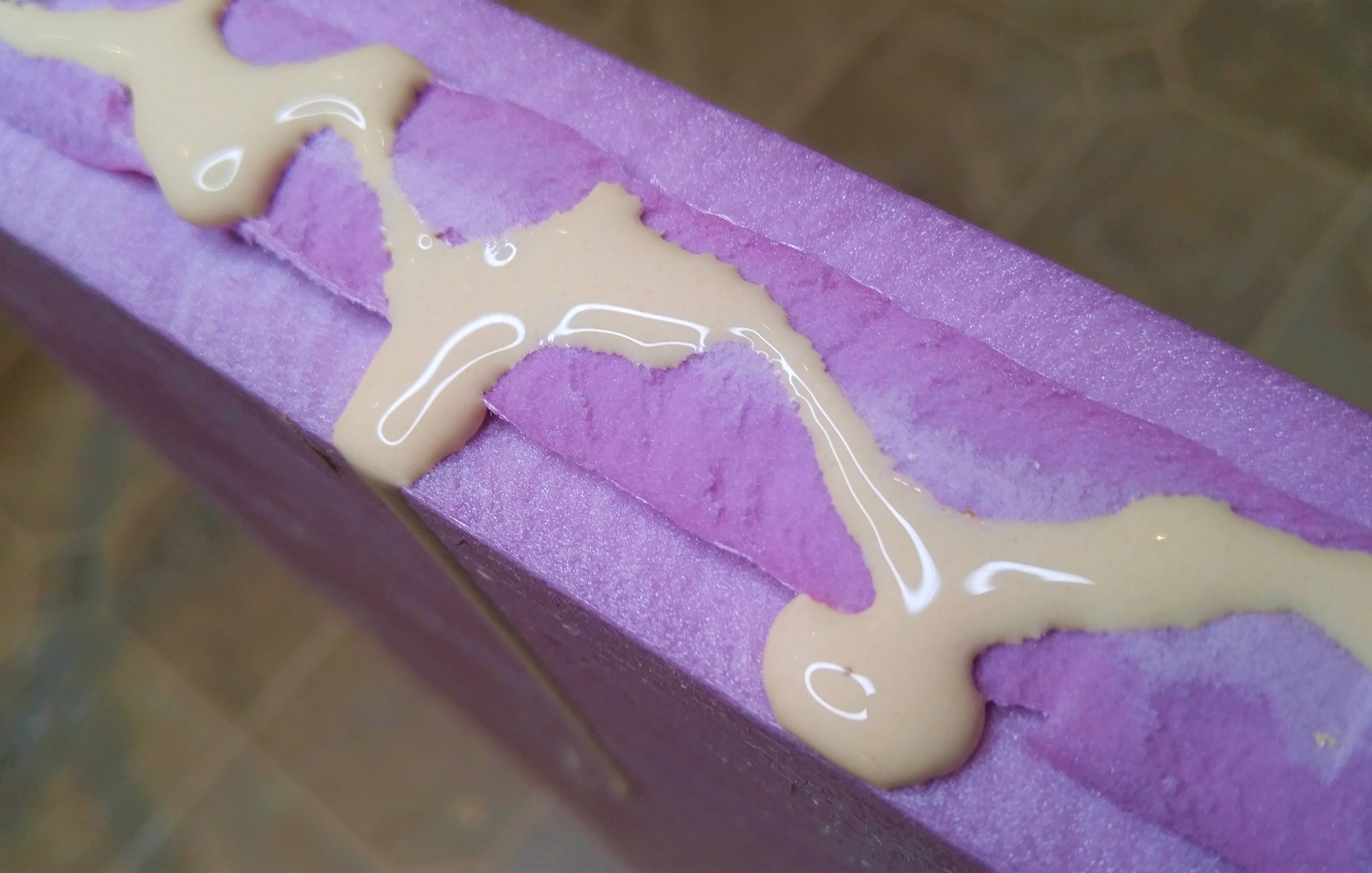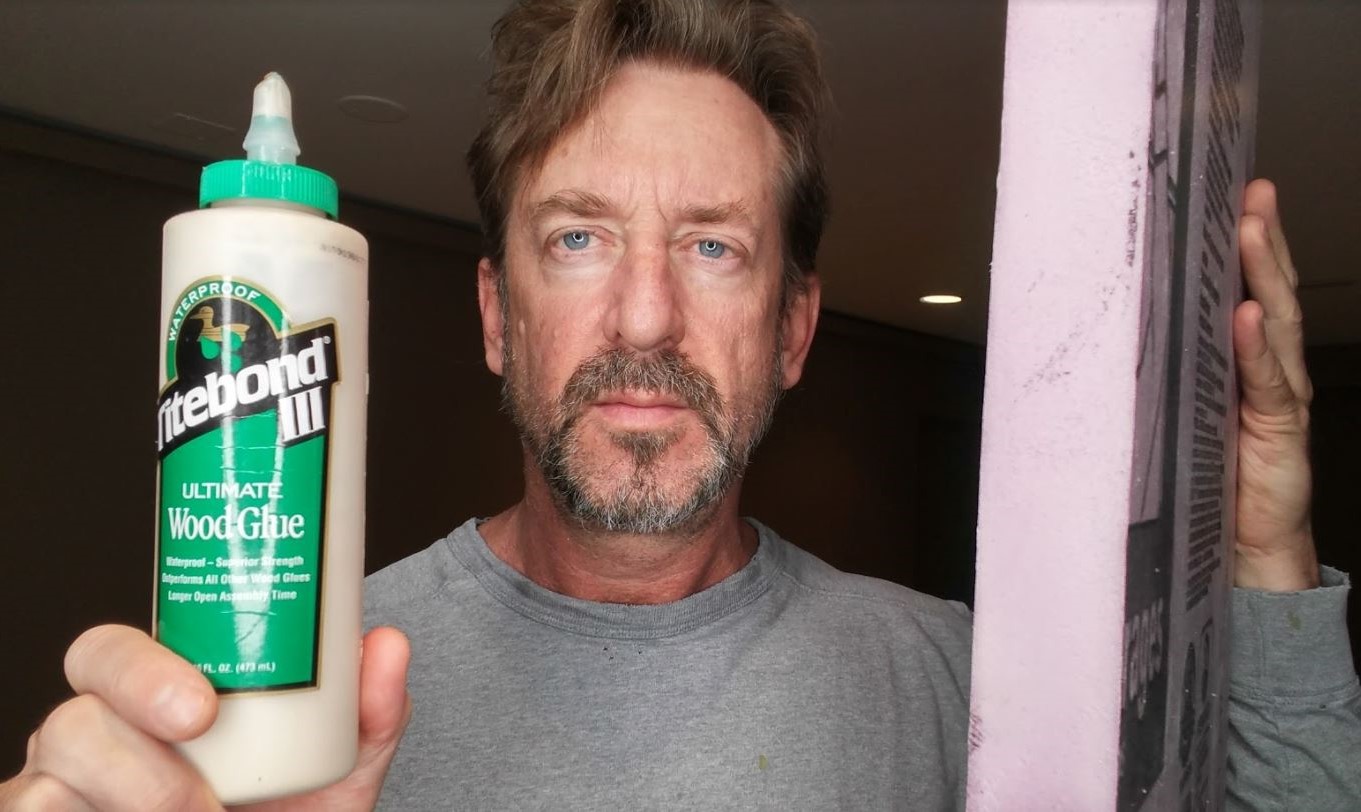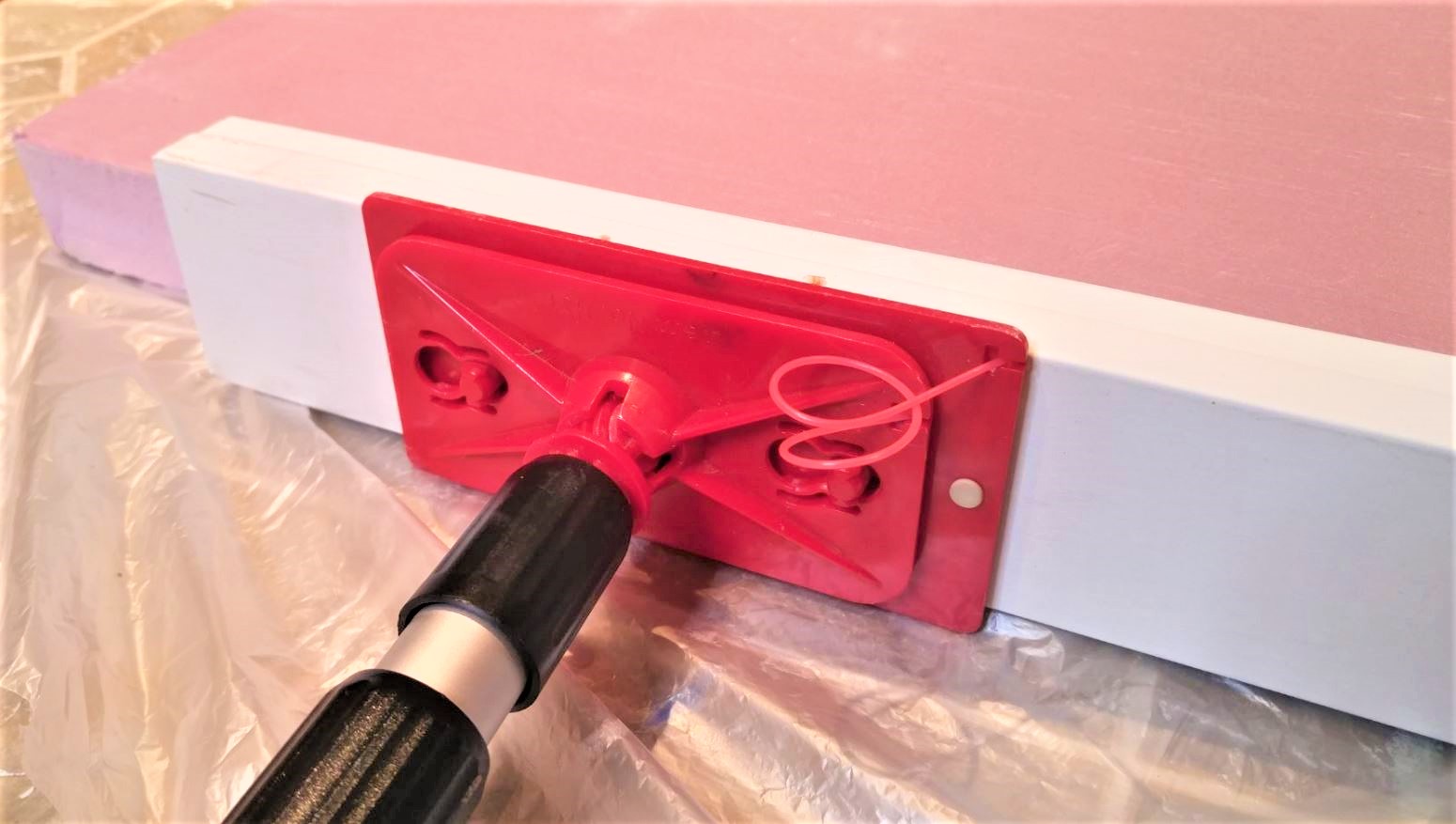Can You Use Wood Glue to Bond Foam to Foam?

Foam is a finicky substance that does not respond to all types of glue. And your all-purpose adhesive solution, the hot glue gun, will melt foam. Will wood glue work?
Answer
Yes, wood glue can be used as an adhesive for extruded polystyrene foam. But the jury is out as to whether it can be used to glue foam edge-to-edge.
Results

Wood glue might be the last type of glue you would use on insulation foam. Wood, foam–they don’t really seem to go together. Yet Elmer’s White Glue is used by hobbyists to glue styrofoam. How different can this be?
For the test, I used Owens-Corning Foamular. It is a “closed cell, moisture-resistant rigid foam board,” according to the Foamular site. Nowhere in the Foamular literature does it say or even imply that Foamular has fiberglass in it. Yet I had such a strong mental association with the Owens-Corning trademarked pink color, along with the Pink Panther mascot, that I assumed there had to be fiberglass.
Face to Face Is Successful
I bonded Owens-Corning Foamular 150 to itself when constructing a bulkhead around some pipes.
That first test worked fantastically well, holding securely. The glue did not damage the foam.
I do not know how long it took to dry, because I used my Zip-Wall Dust Barrier poles as a form of clamp to push the foam piece together, and kept them in place close to 24 hours. I did check out one of my bonds after about 1.5 hours, and the bond appeared to be tight. But that also could have been the vacuum effect of having two flats pieces of material with a liquid substance between them.
Edge to Edge: Jury Is Out

Will Foamular’s smooth facing bond better, worse, or the same as the porous edges of two pieces that have been snapped apart?
Foamular has partial incisions that allow it to snap apart without using cutting tools. The edges are fairly ragged, but they will fit tightly together, much like puzzle pieces.
After 4 hours, I released the Zip Wall poles and the Foamular sections came apart. My conclusion isn’t so much that the wood glue failed; it’s that my test didn’t run long enough.
In the first test, the glue was spread out ultra thinly by the pressure of the two flat pieces. But in the second test, the glue was thicker and (I assume) needed more time to dry.
I will try this test again.